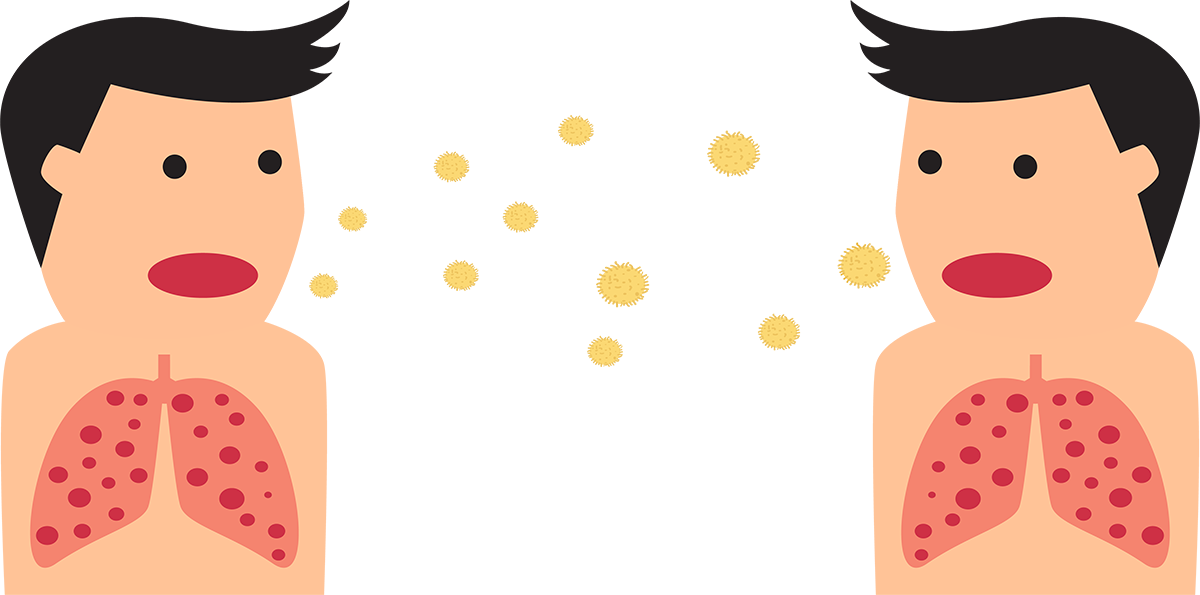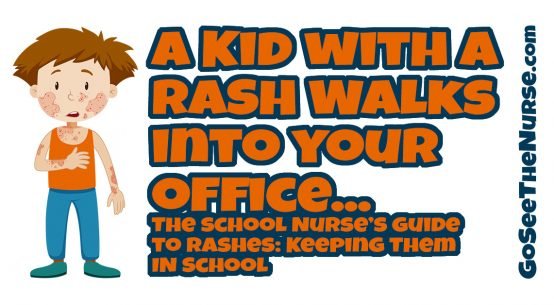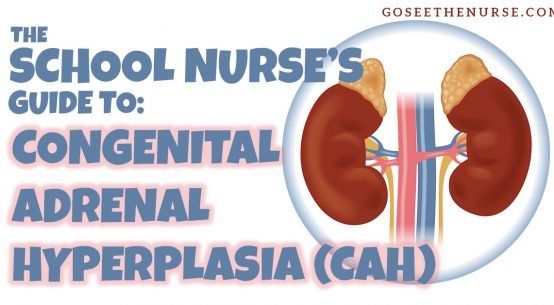
The end of the school day is one of my favorite times of the day. No, not (just) because it’s close to time to leave and get home. I just love watching all the young-uns leaving with their backpacks, shouting, “See you tomorrow, Nurse Kevin!” as they wave vigorously in an attempt to catch eye contact and know their “farewell” was received.
The other day, my series of “see you later, buddy” and “have a good afternoon, little girl” was interrupted by a not-unwelcome question, “Nurse Kevin, what do you know about whooping cough?”
What did I know about whooping cough? I know that we vaccinate against it…oh, do I know about that. After all, this is vaccination season (where we check the records and bug the parents about their children who are lacking a few). But, what did I really know about whooping cough?
“Is the child vaccinated against pertussis?” I asked while I prayed the child they were referring to was not a member of the small army of children leaving my school house at this very moment.
“No, actually, it’s my husband; he’s been sick with this for weeks, and they only recently found out it was whooping cough. And now my 10-year-old son is sick with it (poor child…and husband…AND poor school nurse at the other district).
“Was he vaccinated against it?” I asked.
Before even getting the question mark out on my question I received an implicit, “Yes! He’s been sick with it now for weeks. And it took them (the clinic) weeks to finally check for it. When my son got sick, I told them ‘No! You check and treat for this right now; don’t wait.’.”
Maybe my weak explanation as to why the doctors waited to check her husband for whooping cough and why we, as medical persons, usually practice our trade unknowingly under the influence of the philosophy of Occam’s Razor was a stalling tactic for the fact that I really don’t know the essence of what whooping cough really is. Yes, I know that it’s a bacterial infection that gets into your body through your nose and throat (or by touching your face with unwashed hands carrying the bacteria). I know that it will very easily spread from person to person. And I do know that vaccines can help prevent it in children (and even adults).
We school nurses are aware of the “whooping-like sound” the sufferer makes as they try to breath in after a dry coughing spell that could go on for over a minute (a long time to breathe out without breathing in).
Symptoms like coughing, nasal congestion, runny nose, sneezing, and feeling fatigued, as well as having a fever, are all telltale signs of whooping cough…but also of the flu and the common cold, as well as allergies to pollen and smoke. Most of us…and school nurses…will not jump to “whooping cough” as being the culprit for these symptoms. Here in Southwestern Idaho, with all the smoke we have during this time of the year, I’d likely “write it off” as “allergies or respiratory irritation from all the smoke in the air,” especially for my children who are vaccinated.
After my encounter with this mamma I began to ponder her question, “Nurse Kevin, what do you know about whooping cough?” So, I got to diggin’…
What Is Whooping Cough
Whooping cough is a very contagious respiratory illness caused by a bacteria called Bordetella pertussis (gram-negative, aerobic, pathogenic, encapsulated coccobacillus). These little bacteria dudes lock on to the cilia in the upper airway and cause havoc as they live, metabolize, die, and then excrete a toxin that damages the lining of the airway and causes it to swell, thereby constricting the airway. This bacteria is not found in any other living thing other than in us humans.
We need those cilia. Cilia are like little fingers working along the airway, working in sort of a rhythmic waving motion that helps “move” dirt, debris, and other junk that is breathed toward mucus that “catches” these particles like a mouse in sticky trap (http://www.ciliopathyalliance.org/cilia/structure-and-function-of-cilia.html). Then we clear our throats with a slight mini-cough and then…well…you know the rest.
The Vaccine
The pertussis vaccine was developed in late 1920s and early 1930s and has saved millions of lives! Before the vaccine was created, complications from whooping cough killed between 10,000 and 20,000 people per year…and that was only in the U.S. Consider that the population density was much less in 1930 (U.S. population was about 122,775,046 people compared to 326,766,748-ish in people in 2018). Information provided by The World Health Organization (WHO) (http://www.who.int/biologicals/publications/trs/areas/vaccines/whole_cell_pertussis/Annex 6 whole cell pertussis.pdf) reported that there were 18,351,000 cases of whooping cough in 2002 all over the world (WHO Technical Report Series No 941, 2007). That’s the bad news. The really bad news is that about 294,000 of those infected died. The document also suggested that “global vaccination against pertussis averted more than 37 million cases and 587,000 deaths.”
There are two types of vaccine for pertussis (https://www.aap.org/en-us/about-the-aap/aap-press-room/Pages/Whole-Cell-Versus-Vs-Acellular-Pertussis-Vaccine-Affects-Disease-Risk.aspx):
- Whole-cell pertussis vaccine (wP) given in the diphtheria, tetanus, and whole-cell pertussis combination vaccine (DTwP)
- Combined acelluar pertussis (aP) given in the diphtheria, tetanus, and combined acelluar pertussis combination vaccine (DTaP)
The whole-cell pertussis vaccine (wP) was used in the U.S. up to about the mid to late 1990s. I have read research that the wP is more effective than the combined acellular version given today (DTaP). I have also heard that the wP has more side effects than the aP version. I will only assume that the change to a less-effective vaccine is due to the hope that more people will get vaccinated due to the fewer incidents of the vaccinated experiencing “right-now sickness” side effects, versus the “I may or may not get sick later” rationale of the unvaccinated. But this is only a hypothesis of mine. (https://www.aap.org/en-us/about-the-aap/aap-press-room/Pages/Whole-Cell-Versus-Vs-Acellular-Pertussis-Vaccine-Affects-Disease-Risk.aspx)
Regardless, the combined acelluar pertussis (aP) has an efficacy of about 70% and much higher with subsequent vaccinations. I’ve heard the immunity will wane over time. But this is (somewhat) okay. It’s the young children that are most susceptible to the effects of the infection.
The CDC recommends the following Immunization for Pertussis Schedule:
2 months
4 months
6 months
15-18 months
4-6 years
11-12 years
And then every 10 years throughout adulthood.
Pregnant women should be vaccinated during the third trimester to help protect the baby.
As elementary school nurses, we are concerned that they show up to kindergarten with the first five scheduled immunizations. As a middle school/junior-high school nurse, we are looking for that 11-/12-year-old immunization. As high school nurses, we want to help these adolescents get their immunizations if they have missed it earlier and, if we have a teen-mamma-to-be, we want to educate her about the CDC’s recommendation about vaccination during the third trimester.
For Your Information:
Inactivated whole-cell vaccines. These vaccines are made from microorganisms (viruses, bacteria, other) that have been killed and, when injected into the body, will cause an immune response that prepares the body from whooping cough if the person is ever exposed for real. (http://vaccine-safety-training.org/inactivated-whole-cell-vaccines.html)
Combined acelluar pertussis is made from highly purified components of pertussis bacteria. Basically, these components are “parts” of the bacteria that are purified (antigens) that can trigger an immune response.
Even if someone has had the pertussis vaccine, they can still become infected. The vaccine does not confer lifelong protection. Even so, persons who suffered through an illness of whooping cough will experience a waning “immunity” to future episodes of infection.
How Does Whooping Cough Spread?
The pertussis bacteria is spread by little droplets from an infected person finding their way into the respiratory tract of another person. The droplets could come from infected droplets being “coughed” into the nose, mouth, or eyes of another person.

I tell my children, “Don’t touch your face!” The bacteria may be on a surface that was touched by someone who was infected. What do people do with runny noses? Yep! They wipe them. Children (and most adults) don’t use a tissue. They touch their snot with their hands, and then put that snot on surfaces that others touch. Then we touch our face at some point. Try going a day without touching your face. There are seven holes on our “mugs” to stick our finger in or rub your hand in.
The Stages of Whooping Cough
They say there are three stages to whooping cough. But I kinda feel like there are four. We’ll stick with the industry-supported three stages, but I’ll call “my” first stage “Stage 0.”
Stage 0: There is an incubation period that lasts for about a week (5-10 days but up to 21 days). We know that an incubation period is the moment of exposure to an infectious agent until signs and symptoms of the disease appear.
Generally speaking, persons who are in an incubation period may or may not be contagious (i.e shedding the infectious material); this depends on the virus, bacteria, yeast, or the like. In a case of whooping cough, I am not able to confidently report how “infectious” someone may be during the incubation period. If someone is exposed and not aware of the exposure, offering suggestions as to how to protect your family and others you come may come into contact with is pointless. However, if you have been exposed and know it and are still “waiting to see if you get sick,” use your good judgement and remember the golden rule, “do unto others.” Basically, protect others in a manner you’d expect others protect you. After about three weeks, if you have not begun to show symptoms like those in Stage 1, you should be OK.
Stage 1: The runny-nose stage. Like the incubation period, the symptoms in Stage 1 are something seen in any child or adolescent. The symptoms may be mild and appear to be just allergies or a case of the cold. The infected will experience inflammation of the mucus membranes, and their nose will run. They’ll cough some, yet not with the subsequent “whooping” sound.
This first stage is also called the catarrhal stage. “Catarrhal.” That’s a fun word. It’s pronounced [kuh-tahr-el]. It means inflammation of a mucous membrane, especially of the respiratory tract, accompanied by excessive secretions.
A fever may or may not be present. If a fever is present, it’ll be a low-grade fever. Here’s the “kicker”: most will not feel ill enough to seek medical care. And unless the person knows he or she has been exposed to someone with whooping cough, the infected will likely not seek medical care during this first stage, and (the kicker part) it is only during this stage that antibiotics will be helpful in preventing the progressing to the nastiness of Stage 2.
Stage 1 will last for one to two weeks.
You’ll likely see the doctor try to “hit it hard” with a Z-Pak (Azithromycin). Other ABX that may be prescribed include clarithromycin like Biaxin, erythromycin, and sulfamethoxazole like Bactrim or Septra.
Stage 2: This is where the “whooping” will start following violent coughing “attacks.” They will come suddenly and violently and be followed by a “whooping” sound from the struggle to “suck” in air and regain the respiratory composure.
Consider the vomiting that will occur. Not necessarily from the pertussis but from the “gagging” effect of the severe coughing and struggling.
Stage 2 (also known as the paroxysmal stage) is when the person infected with whooping cough is highly contagious and is most likely to spread to others.
Paroxysmal or paroxysm (păr′ək-sĭz′əm) means “a sudden attack.”
Consider the “whooping” sound. If a “barking” sound is heard, consider the infection to be viral rather than bacterial. Either way, diagnosis is usually by laboratory test from a throat swab taken…via the nasal passages…OUCH! Can you say “watery eyes?”
We school nurses usually will not be caring for infants, but it’s important to know for the sake of family members of the infected that babies may not cough or have a “whooping” sound; they may just stop breathing.
Stage 2 will last from one to a lingering, miserable TEN weeks.
Stage 3: is also known as the convalescent stage. RECOVERY! This stage can last for weeks…and weeks…and weeks (months in other words). The cough will persist yet not as “paroxysmal.” The cough will be more like a chronic cough and progressively less violent.
The Three Stages of Whooping Cough:
Stage 0: Incubation
Stage 1: Catarrhal
Stage 2: Paroxysmal
Stage 3: Convalescent
Treatment for Whooping Cough
Early treatment with antibiotics is usually the only thing that will work. Aside from immunizations, “This is all we got!” Early treatment with a round of Azithromycin, clarithromycin like Biaxin, erythromycin, and sulfamethoxazole like Bactrim or Septra will be the first and foremost action.
What We As School Nurses Can Do
First, become familiar with your school district’s policies regarding whooping cough. And plan on calling the local health department (although the diagnosing physician’s clinic will likely have already done this [but don’t assume]).
Review all the children’s records to make sure they are all immunized. But, as mentioned earlier, all the children will need to be monitored regardless of immunization status. Be on “high alert” during the first 21-day period (don’t forget your poor ol’ teachers…they have lungs. too).
EXCLUDE! EXCLUDE! EXCLUDE! The child who is sick with whooping cough will not be in school. And, you may even consider excluding for a period of time any siblings or those who come into close contact with the child who is sick. If you are wondering when they can come back to school, don’t worry; the doctor will have a plan regarding the child’s return to the classroom setting.
Consider a teaching session with the class to help the ill child’s classmates understand what has happened and that, when they return, the coughing will persist for a bit of time.
If you are wondering when the doctor may give his/her “okay” to return to school…it will likely be after a five-day course of antibiotic treatment and after the child is able to participate in the group setting. As the school nurse, it’s up to you as well to give the “okay” after YOU have determined that the child will not compromise the well-being of all the children (including this ill child). If the child returns too soon, it’s not good for anyone. Use your nursing-gut-feeling to advise the doctor, the parent and the school/school district. If your nursing senses are saying, “Something’s wrong,” it usually is. Give yourself credit for your keen insight. (American Academy of Pediatrics “Managing Infectious Diseases in Child Care and Schools 3rd Edition [with a bit of Nurse Kevin’s commentary regarding good nursing judgment]).

Cool Resources:
https://www.cdc.gov/pertussis/clinical/features.html
https://www.webmd.com/children/whooping-cough-symptoms-treatment#1
https://www.emedicinehealth.com/whooping_cough_pertussis/article_em.htm
https://www.cdc.gov/pertussis/clinical/features.html
https://www.cdc.gov/pertussis/about/causes-transmission.html
https://en.wikipedia.org/wiki/Bordetella_pertussis
https://en.wikipedia.org/wiki/Pertussis_vaccine#cite_note-WHO2007Vac-4
https://www.cdc.gov/pertussis/materials/everyone.html
http://www.immunize.org/catg.d/p4212.pdf



